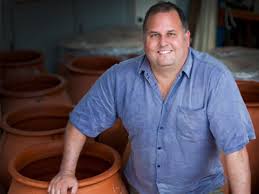Natural v Traditional wines
Its on a lot of peoples lips at the moment, ‘Do you have any natural wine’?
What does this question mean and how do we deal with this, current, fermented trend in the wine scene? Please be aware these styles are not new (excluding Steiner and Biodynamics circa 1930’s). Sure they are the current fashion however these styles have been around since the 4th century Roman times and some would suggest the Phoenicians before them.
Natural Wines
As a broad statement, natural wines are wines made with minimal intervention in the vineyard and during fermentation. Usually they have little to no sulphur added for protection. (Low Ads) They can be a little ‘wild’ on the nose without these ads. This is the major differential between natural and traditional winemaking.
Orange Wines
In a crossover category are the orange wines, or skin contact wines. These wines, particularly on white grapes, see extended contact with the skins resulting in (orange) colouration and enhanced phenolic structure. In Georgia the classic method is to age them underground in clay Kvevri (large, egg-shaped amphorae) which gives them even more earthy taste and palate feel. They are products which benefit massively from being served at correct temperature and context.

Brad Hickey (Brash Higgins) w his Amphora, Mc Laren Vale.
Biodynamic Wines
Those that are made through biodynamic preparation, based on the Rudolf Steiner principal, from beginning to end. These may feel more seasonal in the glass as they are affected by lunar cycle and time of the year. Anyone who has tasted Nicols Joly’s Coulee de Serrant Savennieres will know what we are talking about.
Consumers are in a conundrum as to what natural vs biodynamic vs traditional wines are, knowledge is power, we hope this account helps you further understand the specific differences. Also more importantly how to consume these wines. If your Gravner ‘Berg’, a benchmark natural producer in Italy, is served at the wrong temperature or indeed with the wrong food it can give you a bad taste in your mouth for revisiting the styles. If served correctly it can be an experience up there with the best.
No matter what the style or origin of the producer there is a place on wine lists for all these styles and sommelier’s are embracing the current trends and fashions to encompass new flavours and new feels to their lists and their combinations at the table. The dining scene is certainly more dynamic for it.
At the end of the day there is no right or wrong, its simply a matter of personal flavour preference and there is little as satisfying as sharing good wine and food with friends. Try them, Share them and Discover them.
authored by – Ben Skipper (BS) and Luke Campbell (LVC)